Scouting image of performance location
We are gathered on the unceded land of the wí:koʔ, Tickanwa-tic (Tawakoni), Tonkawa, and Nʉmʉnʉʉ (Comanche), and Wichita peoples. I ask you to join me in acknowledging these Tribes, their elders both past and present, as well as future generations. We acknowledge that our work was founded upon exclusions and erasures of many Indigenous peoples, including those on whose land this performance is located. This acknowledgement demonstrates a commitment to beginning the process of working to dismantle the ongoing legacies of settler colonialism.
Thank you!
Thank you for attending this movement. We hope that you find your own personal way into the material and share your thoughts (regardless of what they are) with us.
Who’s Who
Concept: Sarah Mosher
Movers: Kayla Hill, Trent Sutton, Sarah Mosher
Composer: Nathan Womack @ Wax Thematique
Artistic feedback and support: Abigail Dillard
Stage Manager/ all around organizer: Alex Holliday
Thanks to so many who have heard out my thoughts and ideas and offered great advice, wisdom, questions, and support.
Mental Health Resources are available at the bottom of the page
Artist Statement
Initial mood board for the movement piece
I’ve always been very interested in the role that the body plays in trauma. My own experience of trauma has left very physical manifestations and ramifications, and not in the ways I expected. As we have moved through a global pandemic, the idea of collective trauma became a point of fascination: in a time in which we were completely separated physically, our bodies and our traumas were connected.
The interconnection between psychology and physiology has always been of interest to me—as someone who designs costumes to put onto bodies, I often think about the experience a performer has when they’re wearing something, and how that item interacts with their own sense of the world. I am also constantly questioning how clothing can be created in better and slower ways, ways that acknowledge the presence of the earth. This has led me to an interest in weaving, as well as in learning about and creating bioplastics. To me, the disruption that trauma can have on our natural physiological systems has parallels with the ways in which human intervention has caused disruption to environmental systems. Our society has become so far removed from our own understanding of clothing sources that to return to that understanding feels radical as well as necessary, and gives weight and importance to the environmental aspect of our lives. It also helps us to reclaim the relationship our bodies have to the clothing we wear on a daily basis.
In our society, the body takes a backseat to intellectual, and even spiritual, communication and expression. This is in part why the reality of the body holding trauma in specific ways has been overlooked for so long. In The Body Keeps the Score, Dr. Bessel van der Kolk talks about the advent of physical movement and bodily awareness as a part of treating trauma; this is a surprisingly new idea in our culture, and is still not as implemented and acknowledged as it could be. We know that talk therapy is an incredibly valuable tool, but when people experience trauma, it can be difficult for them to access and work to heal that trauma through verbal means since verbal cognition tends to be unattached during serious trauma. This is why it was important for me that this piece be movement-focused.
Creating a movement piece allows myself and the other performers the opportunity to engage with our questions directly without a dependence on text, and without directly embodying our own personal experiences of trauma. It allows us to acknowledge in community what our bodies urge us to pay attention to. The interconnectedness of trauma, and what we know of psychological syndromes where trauma begets trauma (e.g., Snow White Syndrome), shows that the process of healing trauma requires an acknowledgement of its interwoven nature and our interdependence on others. In a similar way, environmental systems can adapt and change, but our every impact creates new damage in other parts of the system. Restoring a damaged ecosystem is not as simple as addressing one part of the damage; the entire ecosystem must be considered as one body. Considering the physical and the visceral as we seek reconciliation is essential for humans and other living things.
During rehearsals, we discovered with fascination our impulses to connect, to support, and also to hurt one another. In creating a movement piece that was not choreographed, but instead relied upon the discipline of the performers to stay present with their bodies throughout the exploration and follow their impulses as they were guided internally, we allowed our bodies to speak their own truths in this performance, giving vulnerable voracity to our brief time together. We hope you consider the performance today an invitation to engage with your body and hear its truth.
Artist Bios
Sarah Mosher is a Designer, Educator, and Theatre Artist based on the lands of the wí:koʔ, Tickanwa-tic (Tawakoni), Tonkawa, and Nʉmʉnʉʉ (Comanche) in Waco, TX. Sarah has worked as a costume designer in theatre, opera, film, and dance with a specialization in new and devised works. She currently serves as an Assistant Professor of Costume Design and Technology at Baylor University, where her scholarship focus is on intersectional sustainability of labor and materials, and design pedagogy. Sarah received an MFA in Theatrical Design from University of Texas at Austin, where her thesis work investigated questions of how fairy tales portray clothing that Protects, Controls, and Liberates Women, and was presented as a live installation performance. Thanks to Abigail for offering time to this project and providing much-needed insights; Trent and Kayla for trusting this wild process; thanks to Alex for being my brain and keeping us all on track; big thanks to my dear friend Nathan for offering himself and his talents to the process, creating responding and adjusting and creating stunning music as always; and to my family for their support of my wild whims.
Kayla Hill is a North Carolina-born and raised dancer currently attending Baylor University with a major in Psychology and minor in Communications. She has been dancing since she was two and began praise dancing at six with Greater New Light Church. From there, she learned hip-hop dances online and turned them into her specialty. She now works as a dance teacher and choreographer. Kayla would like to thank her parents, Gretel and Dominque, Mrs. Malissa for helping her discover her love of dance and all the support, and her beautiful baby daughter Kaelynn, who keeps her motivated through everything.
Trent Sutton is the Artistic Director and founder of Wild Imaginings, a performing arts company here in Waco, TX. Trent is a director with over 40 show credits to his name, most recent of which have been “Admissions,” “A Body of Water,” and “As You Like It.” He is also a playwright and dramaturg, one of his passions being the development of new theatrical work. He is thrilled to be performing alongside Sarah and Kayla, always happy to be a part of new and interesting art happening in the Waco community. To check out more of Trent’s work, please visit wildimaginingswaco.com.
Wax Thematique label founder, music producer and vinyl selector, Nathan Womack spent the last few years traveling between USA and Asia (pre-pandemic) digging for obscure recordings that would otherwise likely be lost forever. Between managing releases for Wax Thematique and producing his own solo compositions and private commissions, Nathan produces for the instrumental hip hop project Paces Lift and Ben Bounce. Visit waxthematique.com for more information.
Abigail Dillard is a Master of Fine Arts in Directing student at Baylor University. She earned her Bachelor of Arts in Theatre from Centenary College of Louisiana, Magna Cum Laude. Afterwards, she went on to an internship at The Kennedy Center for their Explore the Arts programming. Most recently, Abigail has been living in Washington, D.C., where she worked as a Lead Teacher creating an art curriculum at Little Folks’ School. She also worked as a Teaching Artist for Imagination Stage, a children’s theatre in Maryland, where she created and led acting, scene study, devised, and improv courses for Middle School students. Favorite directing credits include The Complete Works of William Shakespeare (abridged) [revised], Hearts Like Fists, and collaboratively directing a devised work entitled #WhyUntoOthers?. You may find examples of her creative work at www.abigaildillard.com.
Alex Holliday is a Buenos Aires-based actress, singer-songwriter, director, writer, dialect coach, and language teacher, presently working from wí:koʔ, Tickanwa-tic (Tawakoni), Tonkawa, and Nʉmʉnʉʉ (Comanche) land in Waco, Texas. She has performed multilingually on stages across the United States, Thailand, and Argentina. Her original work centers around questions of language, mythology, individual and communal identity, and the intersectionality of social, racial, economic, and climate justice. Thanks to Megan Davis with City of Waco Parks & Recreation for answering so many emails; to Nathan, Abigail, Trent, and Kayla for bringing yourselves to this piece; and to Sarah for your fierce creativity, bold understanding, and compassionate leadership.
Notes on Bioplastic
wool fibers embedded in starch based bioplastic colored with tumeric
Bioplastics are a collection of materials which, by definition, will break down quickly without causing harm to the environment. In the summer of 2019, I met fellow costume designer Andrea Lauer, who was experimenting with bioplastics in her work. I was immediately fascinated by the possibilities and interested in her experience with them, though it wasn’t until the shutdown in spring of 2020 that I found myself with enough time and attention to explore this medium.
Bioplastics use a variety of substances to form their structure; in the case of our performance, we used a bioplastic made from potato starch, and one made of gelatin. These substances are bonded with heat and acidity and made elastic by the introduction of glycerin. Potato starch creates a semi-transparent material with a texture and elasticity very similar to that of human skin, while gelatin can create a hardened plastic which can be almost perfectly clear. While easy to make at home, these kinds of bioplastics are not impervious to heat and moisture. However, forms of bioplastic created with milk casein in a laboratory can withstand normal applications of heat and moisture, creating a viable alternative to petroleum-based plastics. For more information and to make your own bioplastics, click here.
My first attempt involved a gelatin-based recipe, one which did not include an acidic agent (in this case, vinegar), and while the material itself dried nicely, it was also heavily decorated with mold. I reached out to Andrea, who was kind enough to give me her time and energy and answer my questions. I then tried a variety of recipes I found online, adapting them based on the outcomes, and found that I really enjoyed making a potato starch-based bioplastic because I loved the flexibility of the material.
During Re-Fest in spring of 2021, I attended the From Maize to Bioplastics Workshop Facilitated by Alvaro Azcarraga, a Mexican-American artist working with bioplastics as a way to engage with cornstarch and maíz. During this workshop, participants shared successes and failures of various attempts, and I picked up some key information that I found to be incredibly helpful.
After creating a number of variations of the potato starch plastic, I resolved to return to gelatin and read The Bioplastic Cookbook by Margaret Dunne, which offered a variety of recipes to create a hardened bioplastic made from gelatin. I adapted and tweaked these recipes until I was able to achieve the results I was interested in. I found that I was able to allow the material to dry for 24 hours, and then could drape it over an object to create a three-dimensional shape. I have also experimented with color and texture in this process, adding spices like turmeric, cumin, parsley, cayenne, and pumpkin pie spice, as well as embedding yarn into the bioplastic as it dries.
The visceral aesthetic nature of the bioplastic inspired its use as costume, mirroring neural networks, veins, and skin. My hope had been that the breakdown of the material would happen quite rapidly, allowing it to melt and transform during the performance, but the substances have proven to be more robust than I anticipated. Embracing the nature of the bioplastic allowed me to highlight the hidden system of the body whose response is so profound in the face of trauma.
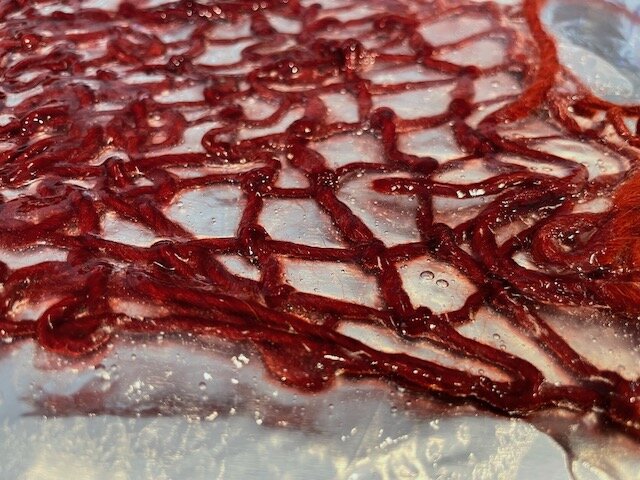
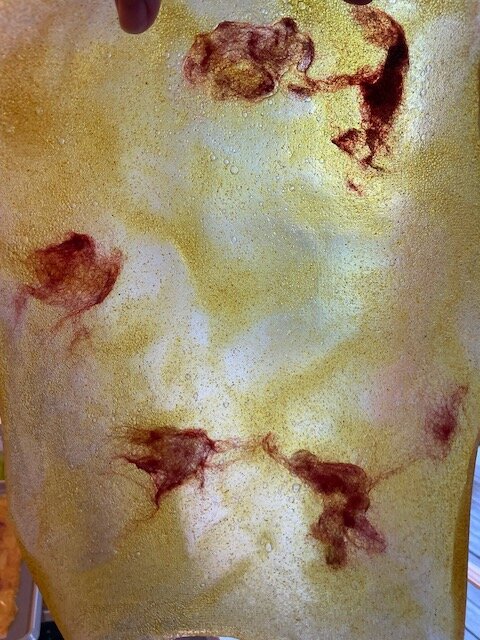
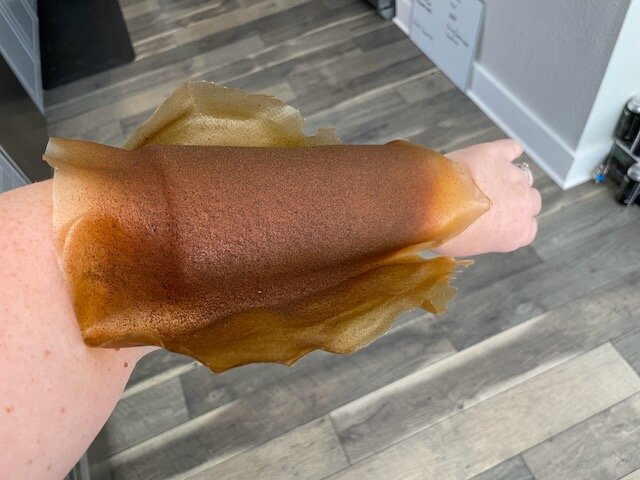
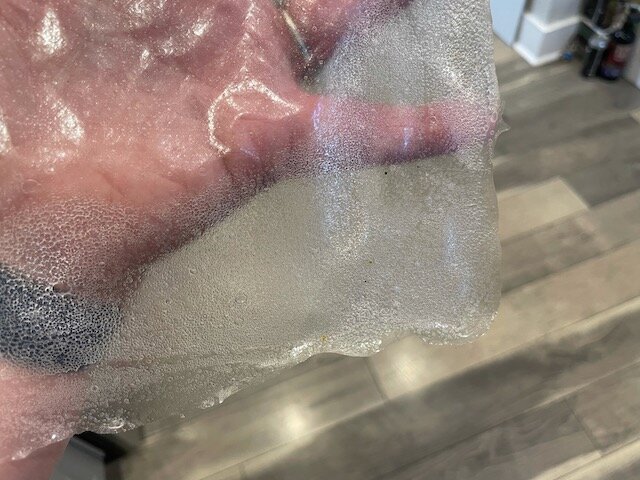
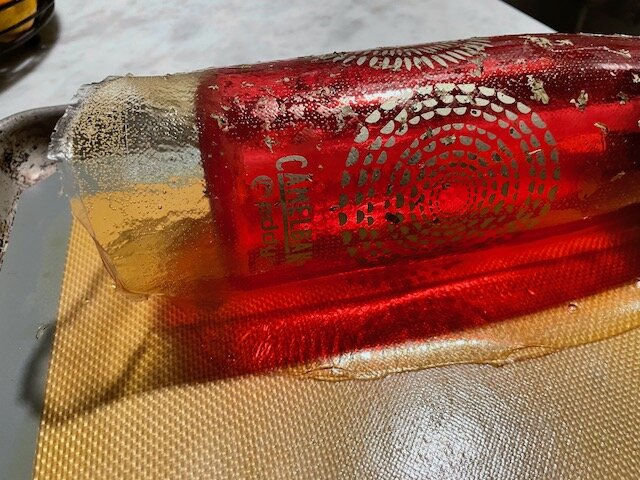
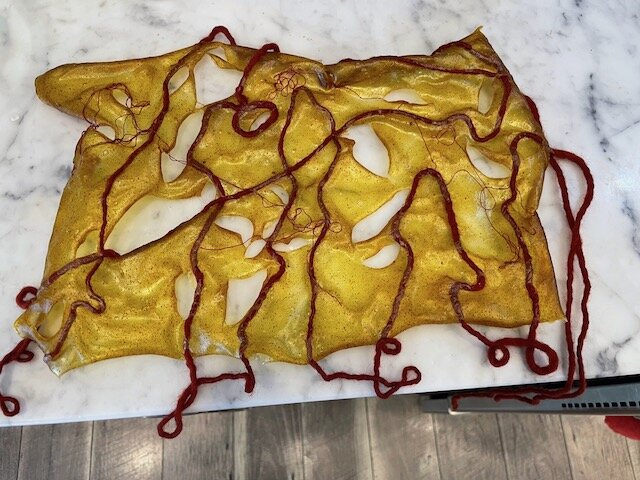
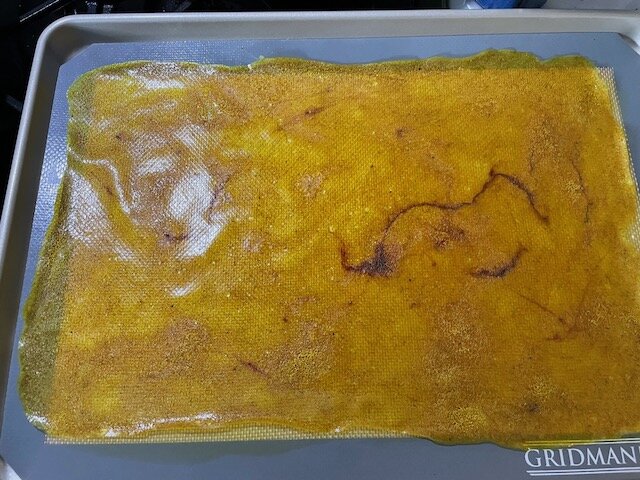
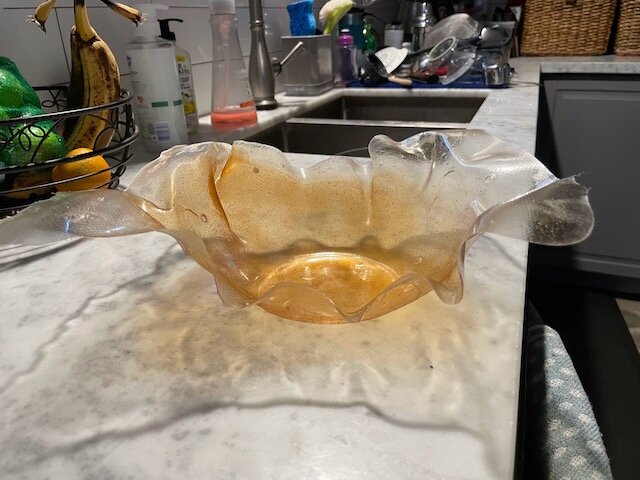
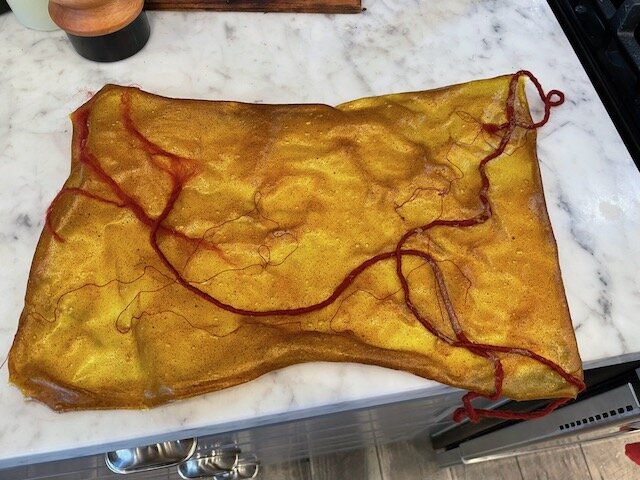
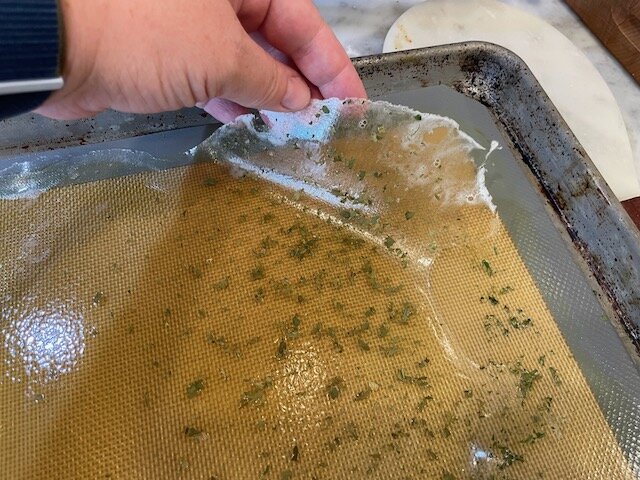
Notes on Weaving
I began weaving in earnest this summer, taking advantage of access to looms provided by the Fiber Barn at Homestead Heritage. I was interested in reconnecting my own body with the entire process of creating garments; the separation that I feel between the origins of my clothes and my everyday donning of them has created a hole in my bodily understanding of the world. I sought to rectify that by physically experiencing the process of taking yarns and turning them into cloth which could then become garments.
An unexpected byproduct of this journey has been the meditative, rhythmic experience of weaving, and the space it has created for me to process and engage with my own physical and psychological trauma. Weaving on a loom is a whole-body process, requiring the use of both hands in coordinated effort to throw the shuttle back and forth with just the right amount of force, while the feet are engaged with the pedals that lift certain patterns of yarns to create the particular weave. It is much easier to work the pedals without shoes, so the process becomes even more intimately connected as the nerves of the soles interact with the loom. This complete bodily engagement connected with and informed my movement work, and, by consequence, this performance. The rhythmic sound of the looms inspired me, and I captured a recording to send to Nathan--who was likewise inspired--and it found its way into the music for this performance.
The physical experience of creating the material for this performance is, in essence, an aspect of the performance itself. The process informed my bodily truth, created a space for the processing of trauma, allowed me to imbue the pieces with my own experience, and prepared me to be present with the material.
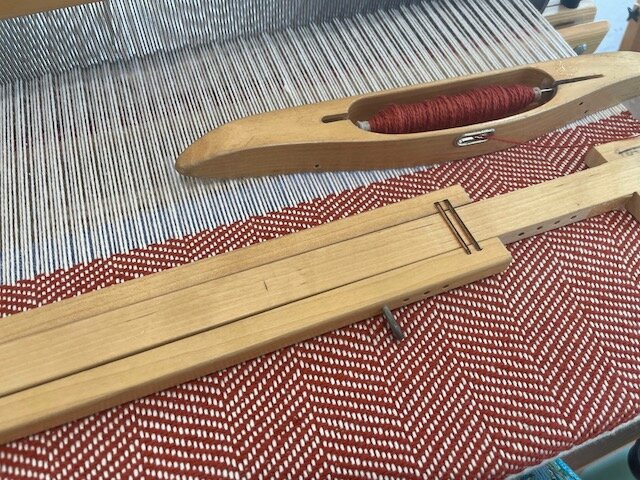
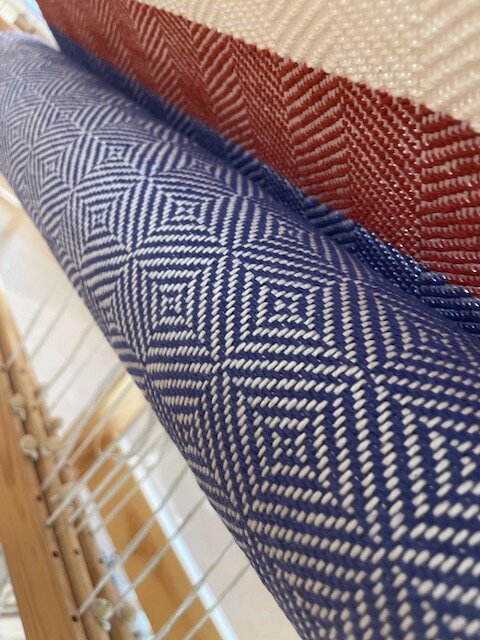
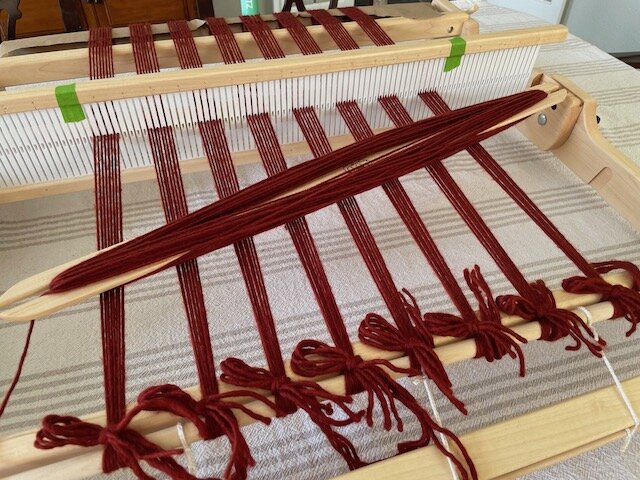
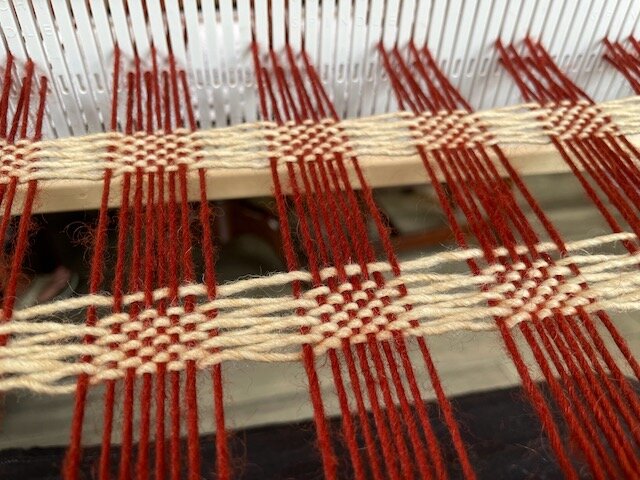
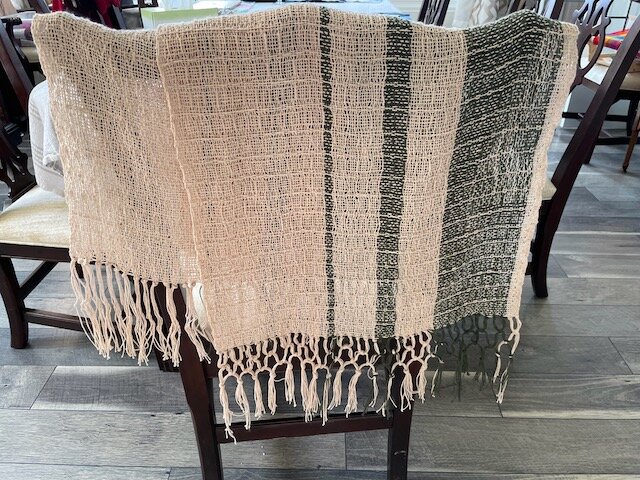

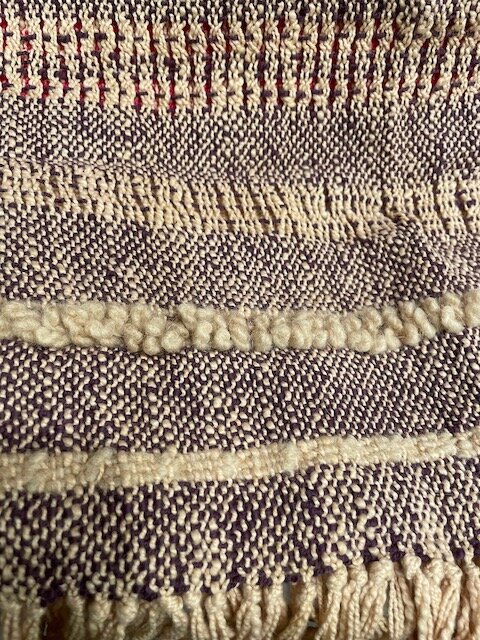
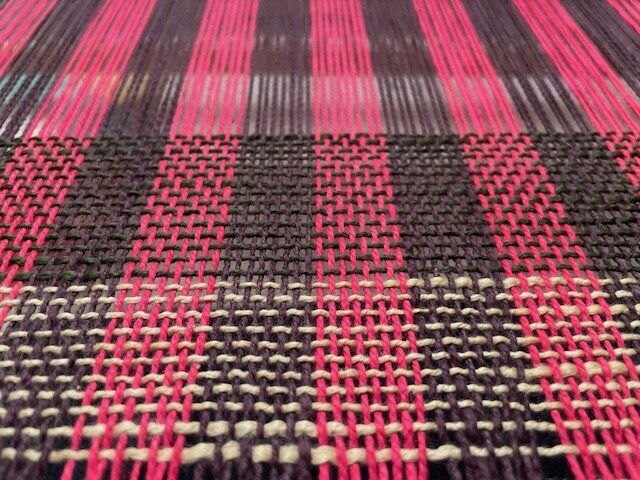
Notes on Zero-Waste Patterning
Zero-waste cutting is a process of garment creation in which no part of the materials is wasted during production. It is a process as old as weaving itself, due to the need to not waste any of the precious materials involved that have been hard-gathered, created, and processed. With the advent of the concept of disposable fashion, more and more waste was permitted in the supply chain. Since I wove these materials myself, I was loath to cut away and waste any aspect of them, so I turned to zero-waste cutting as a process by which to create the garments.
This process has many manifestations, from creating shapes that follow the rectangular outline of the fabric, such as a tunic, to cutting the fabric and rotating it diagonally to create more complex shapes.
For more information about zero-waste cutting, click here.

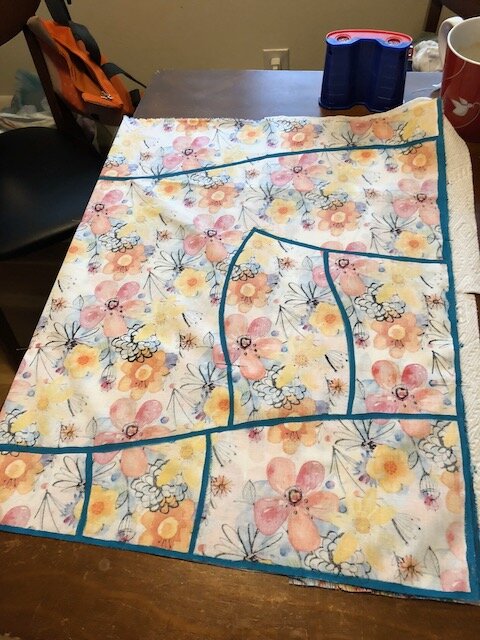
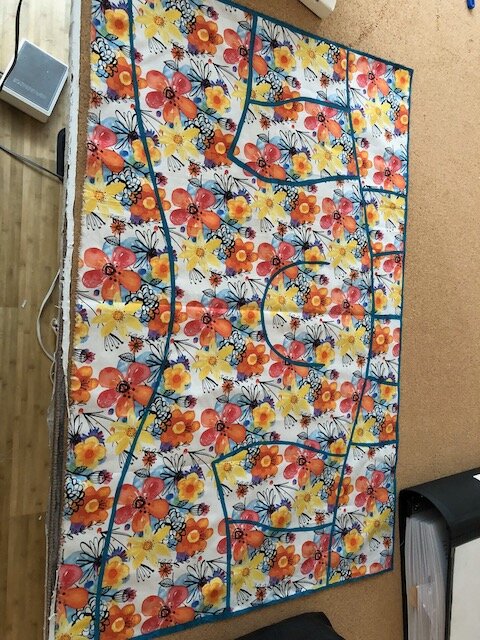
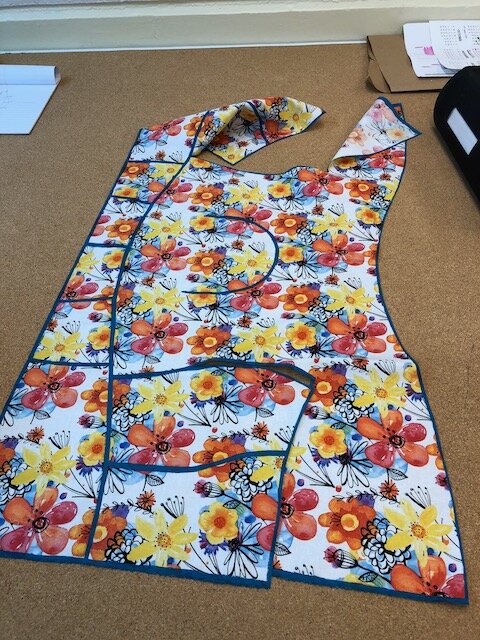
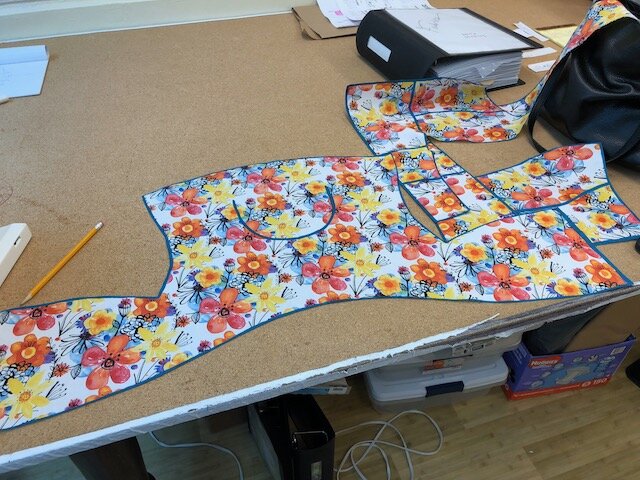
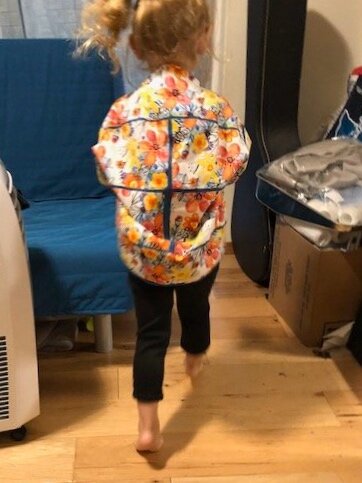
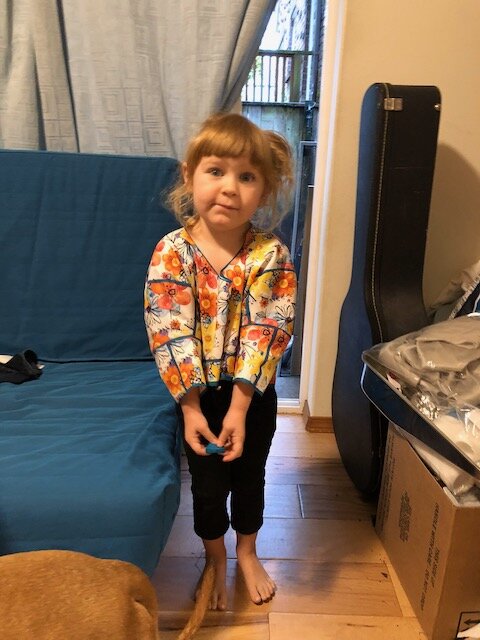
Further Reading
The Body Keeps the Score by Bessel van Der Kolk
Why We Dance: A Philosophy of Bodily Becoming by Kimerer Lamothe
The Lucid Body by Fay Simpson
Mental Health Resources
National Suicide Prevention Hotline
*Available in English and Spanish with resources for Deaf/HOH people
1-800-273-8255
Deaf/HOH support: 1-800-799-4889
Chat online at suicidepreventionlifeline.org
Crisis Text Line
Text: TX to 741741
Visit crisistextline.org
The Trevor Project: Saving LGBTQ+ Lives
1-866-488-7386
Call, text, or chat online
Texas Suicide Prevention Collaborative
Visit texassuicideprevention.org
Texans Recovering Together
866-576-1101
Specifically focused on Covid-19 and Winter Storm trauma for McLennan, Bosque, Hill, Falls, Limestone, and Freestone counties
Waco Family Medicine
Counseling and Psychotherapy Services
National Alliance on Mental Illness (NAMI) Waco
Support groups available: Connection recovery, LGBTQ+ connection recovery, family support, family support for parents
Text NAMI to 741-741 to connect with a trained crisis counselor, otherwise contact through website
NAMI National Information Hotline: 800-950-NAMI



